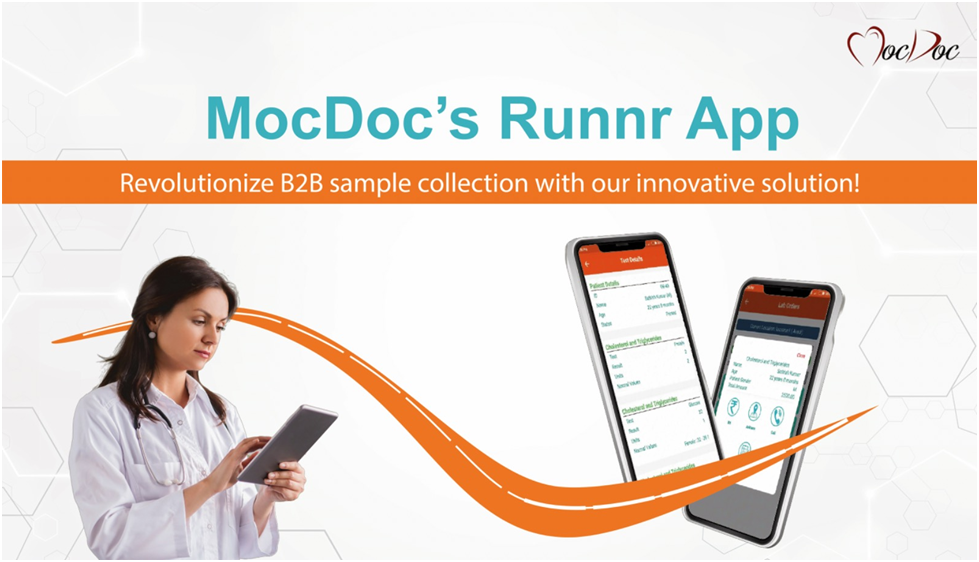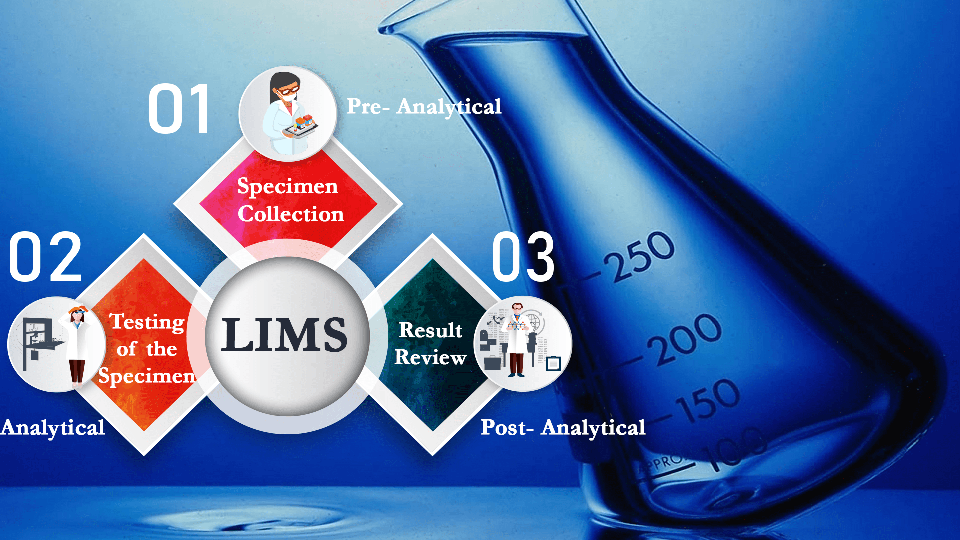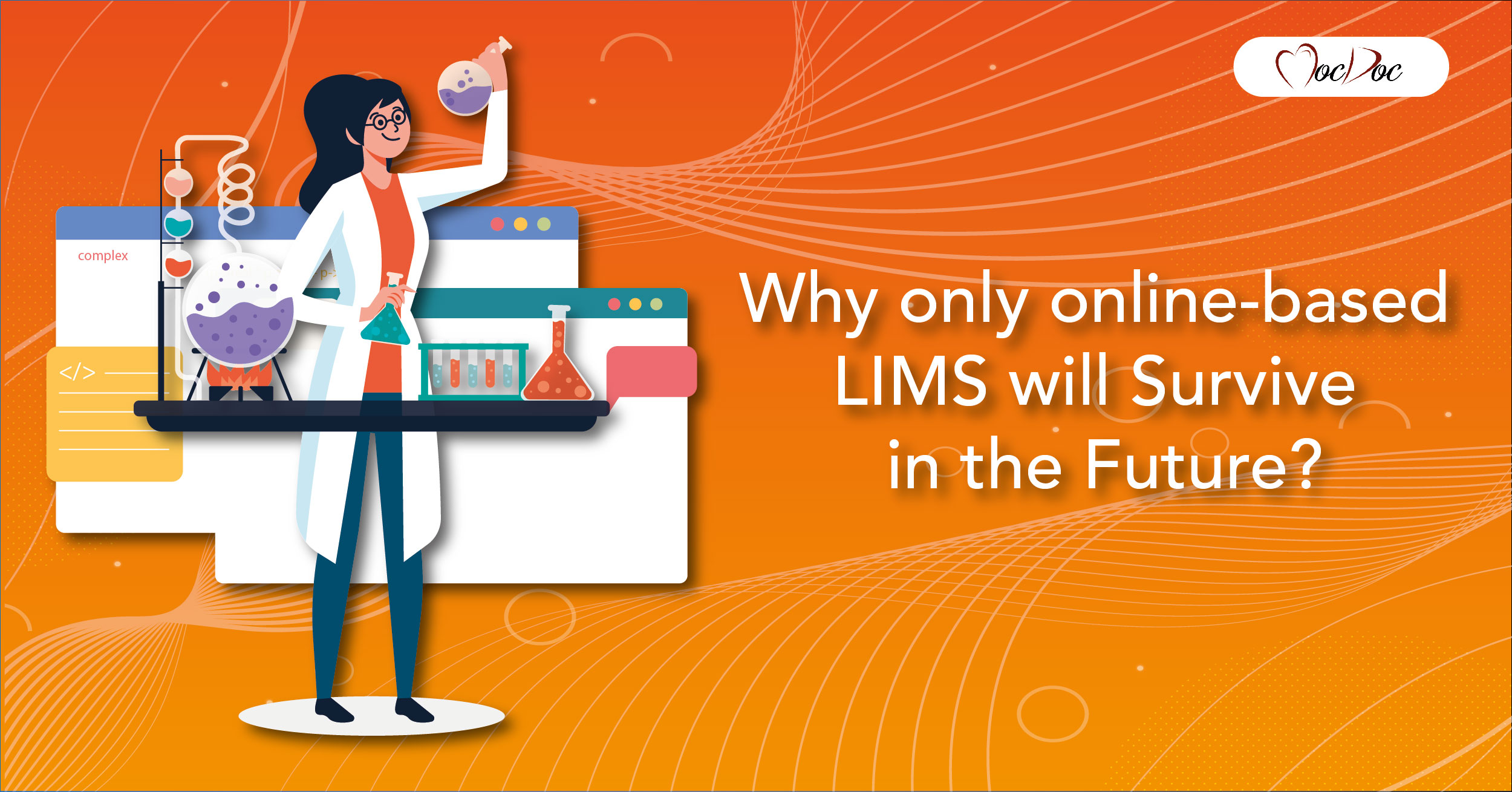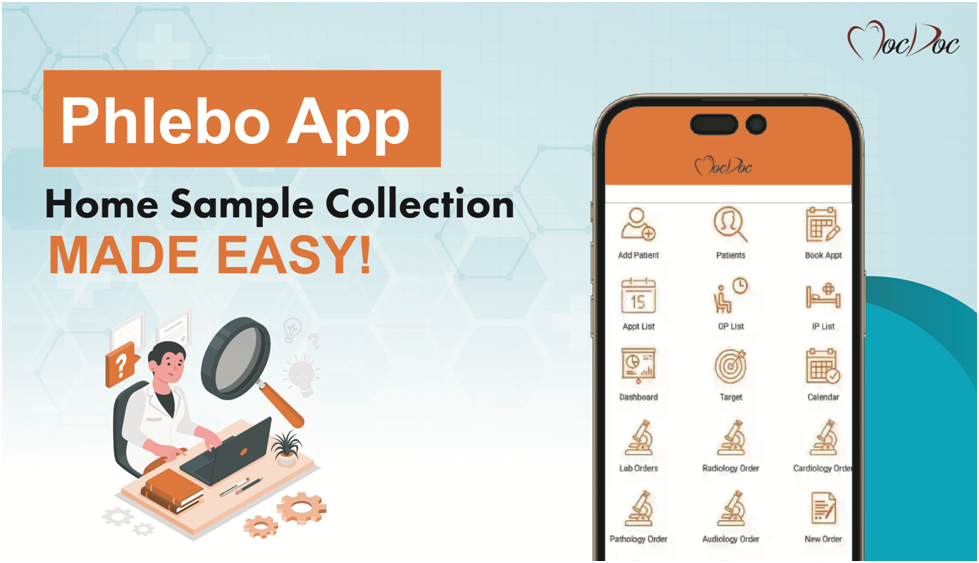MocDoc's Offerings
Revolutionize B2B sample collection for your laboratory! MocDoc’s Runnr App
Published By
Preethi
2023080512:52:37
Category LIMS

MocDoc’s Runnr mobile/web application is designed to handle the sample collection for B2B clients seamlessly. Handling a B2B sample movement can present multiple challenges. One challenge is the potential for delays and miscommunication, leading to samples not reaching the main lab on time. This can disrupt testing timelines and delay crucial results. Another is the manual nature of the process, which increases the risk of human errors such as misplaced or mislabeled samples. Additionally, coordinating logistics and ensuring proper documentation can be time-consuming and prone to inefficiencies.
Overall, the lack of a streamlined system for sample movement in the B2B context can result in operational challenges, delays, and errors impacting the efficiency and reliability of laboratory processes.
To overcome this, MocDoc has designed an application that is used by Runnr, the person who is responsible for collecting test samples from the partnered lab and submitting the same at the main lab. This application is used in the pre-analytical phase of the sample lifecycle.
Sample collection for B2B clients - workflow
In the process of handling B2B sample movement between the main and partner labs, several steps are involved. Once a partnered lab requests a test with the main lab, a runnr is assigned by the main lab to facilitate the sample collection and transfer. The partner lab generates a "Test Requisition Form" (TRF) that contains all the necessary details of the requested tests. This form, along with the test sample, is then shared with the assigned runnr.
The TRF serves as a crucial document as it outlines the specific tests to be conducted on the collected samples. The identification of the samples is typically done through barcodes that link them to the associated patients, ensuring accurate tracking and traceability.
The assigned runnr is responsible for ensuring the safe and timely delivery of both the TRF and the test sample to the main lab. Upon receiving the samples, the main lab validates and accepts them, carefully verifying the information provided in the TRF. Subsequently, the main lab proceeds to process the samples for the requested tests, following the established protocols and procedures.
Efficient coordination and communication between the partner and main labs, as well as the diligent execution of the sample transfer process by the runnr, are essential to ensuring the smooth flow of samples and accurate testing outcomes.
Benefits of using the Runnr app to handle B2B sample movement
Using the Runnr app, the personnel designated to handle the sample movement between the partnered and the main lab can perform the process effectively, as it is easy to generate and share the TRF, and also to record progress from time to time. Here are a few benefits of using the Runnr app
● The application enables users to generate and submit the TRF online, eliminating the need for manual paperwork and reducing the likelihood of errors such as missing records.
● Barcodes are generated to uniquely identify test samples in relation to patients, streamlining the handling process and ensuring accurate testing. They facilitate the correlation of samples with the correct patients and requested tests, reducing errors.
● Sample movement is closely monitored as the runnr transfers them between labs, enabling efficient tracking of delays and issues.
● Prior to testing, a meticulous verification process confirms the correct sample. This adds an extra layer of quality control, minimizing errors and mix-ups.
The combined use of barcodes, monitoring, and verification enhances the overall accuracy and efficiency of the testing procedure.
Incorporating a dedicated mobile/web application for B2B sample movement has revolutionized the process, eliminating manual efforts and errors. Seamless generation and submission of TRFs, along with barcode identification, ensure accurate testing and correlation with patients. With real-time monitoring, delays can be promptly addressed.
Embrace the power of technology for efficient and error-free sample handling. Try the Runnr app today and streamline your B2B sample management. Unleash the complete potential of your laboratory with our Mocdoc LIMS Software.
Related Articles
What is laboratory information...
..... Read more
What are the criteria to choos...
Laboratory Information Management System (LIMS) is..... Read more
Why only online-based LIMS wil...
Every modern industry laboratories are under inten..... Read more
Eliminating Inconveniences at ...
The need for home collection of samples has become..... Read more



